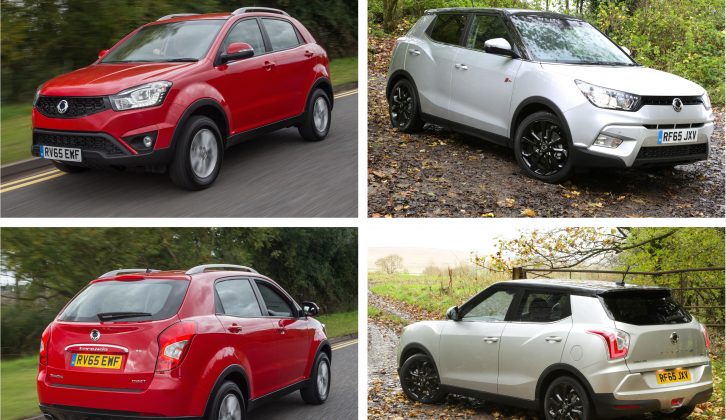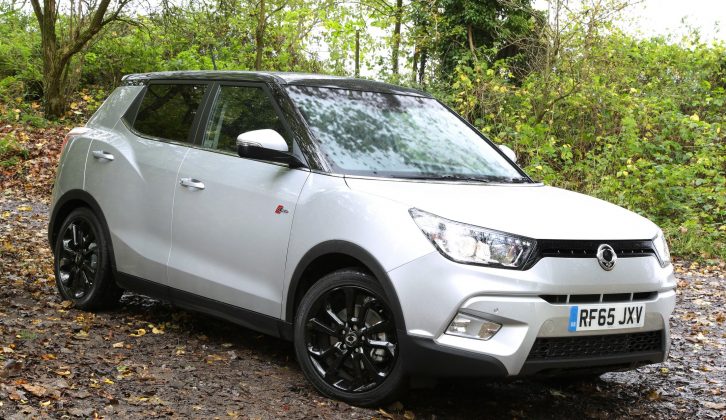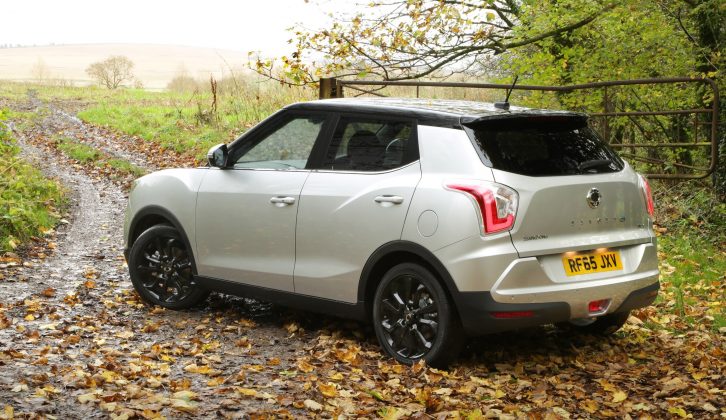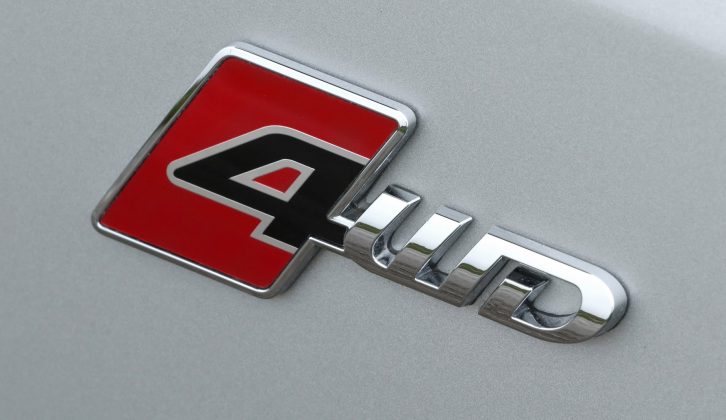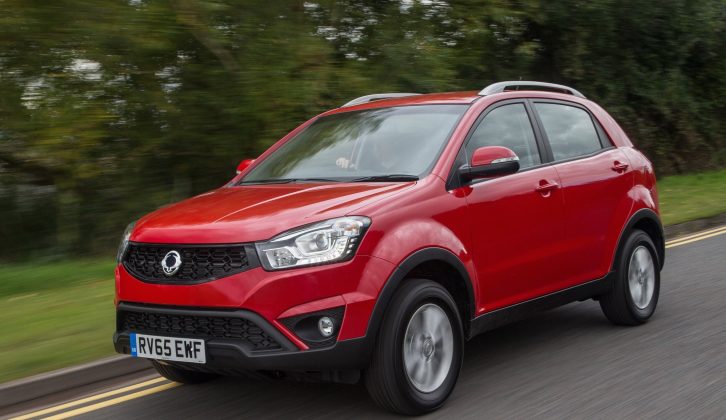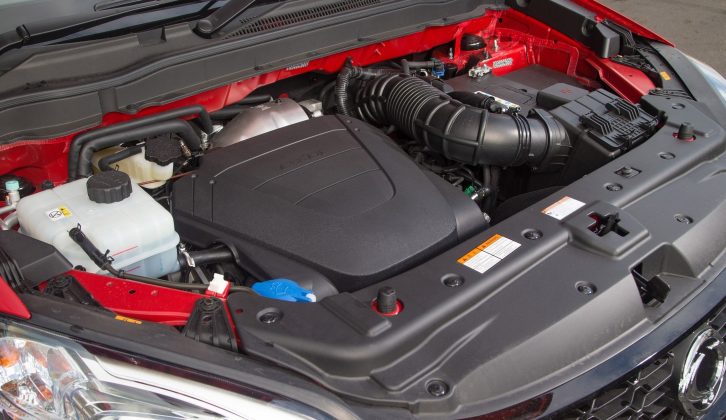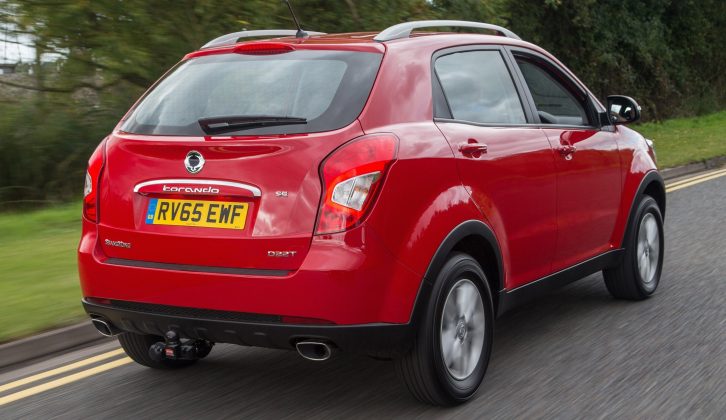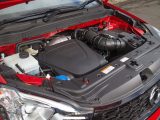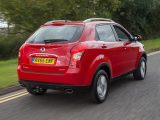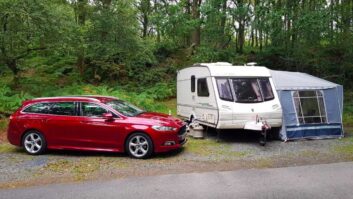SsangYong‘s on a bit of a roll at the moment. So far in 2015, sales are more than double what they were in 2014. The new Tivoli compact crossover gives the brand a contender in one of the fastest growing sectors of the car market, and now there’s a 4×4 version.
If that wasn’t enough to keep momentum going, a new 2.2-litre diesel engine now powers the Korando, Rexton and Turismo, offering more power and torque with better fuel economy.
I’ve been looking forward to a spin in the 4×4 Tivoli since driving the diesel towards the end of the summer. My biggest criticism of the car was the hard ride, and it’s some way off the best crossovers for driver appeal. But on price, practicality and equipment, the Tivoli proved hard to fault.
The 4×4 gets more sophisticated multi-link suspension, so I’d hoped for a more forgiving approach to bumpy roads. If there is an improvement, though, it’s a slight one: the Tivoli is still a little too stiff for comfort. The plus side is that the Tivoli is well tied down over dips and crests, which bodes well for stability when towing a caravan.
Like the front-wheel-drive Tivoli diesel, the 4×4 has a 1500kg towing limit. However, the kerbweight for the manual jumps up by 100kg to 1530kg. That gives an 85% match figure of 1301kg. Autos weigh 1555kg, with an 85% match of 1322kg.
The 1.6-litre diesel has 113bhp and 221lb ft of torque. That should be enough to pull caravans weighing 1300kg or so at a reasonable pace. We drove the six-speed auto, which changed gear smoothly and was quick to kickdown through the gears for swift overtaking. As with most autos there’s a manual override, but unusually the Tivoli’s gearbox uses a small switch on the side of the lever. It does the job, but a gear lever you push and pull or paddles behind the steering wheel would be more involving.
I drove the car on dry roads, so the SsangYong’s torque-on-demand system will have sent all the engine’s power to the front wheels most of the time, with power only going to the rear wheels if sensors detected the fronts were starting to slip.
Running as a front-wheel-drive car most of the time means fewer internal parts on the move and better fuel economy. The manual achieves 60.1mpg on the combined cycle, but the auto’s official figure is a disappointing 47.9mpg. That’s a huge difference, and a good reason to pick the manual. Making regular use of your left leg while driving also saves £1000 on the purchase price of a top-spec ELX model.
SsangYong says most buyers go for the fully loaded ELX, which costs £18,500 for the manual. Stepping down a rung on the ladder to the EX is no great hardship, though. It still has a 7in touchscreen, 18in alloy wheels and leather upholstery. Choose the EX and the price drops to £17,100.
However, if you don’t stay at farm campsites and mostly caravan in the summer months you may decide the two-wheel drive is better value. The diesel EX costs £15,850, saving £1250 over the 4×4. On balance, though, we think the added traction and higher kerbweight of the 4×4 makes it a better bet for regular towing.
Whether it’s a better choice than the updated Korando is another question altogether. The Tivoli is SsangYong’s car of the moment, but contrary to what some people might tell you, the larger Korando is a decent car in its own right. Now, with its brawny new engine, it’s better than ever.
I stepped from the driver’s seat of a £19,500 Tivoli ELX 4×4 auto into a £15,995 two-wheel-drive Korando SE. I half expected to feel that I was stepping back a generation, but it didn’t. The Korando steers more consistently and rides much better than it’s more highly regarded little brother. And now it has a really strong engine that feels ideally suited to towing.
There’s 176bhp and 295lb ft of torque. Both are significant increases on the old engine’s outputs, but it’s the high torque figure which should really count while towing. It’s delivered from just 1400rpm, and so long as you don’t let the revs drop below this figure, the Korando really shifts. Even so, the official combined figure for the two-wheel-drive model is 53.3mpg.
Not many new cars at this price point have this much pulling power, and very few are so heavy – even the two-wheel-drive has a 1701kg kerbweight, giving an 85% match figure of 1446kg. The towing limit for all models (there are 4×4 manuals and autos as well as the front-wheel-drive manual I drove) is two tonnes.
Like the outgoing 2.0-litre, there are quieter engines than the new 2.2. And like earlier versions of the Korando, you can buy SUVs which are more fun to drive and which have more upmarket interiors. But for the money, the revised Korando has a lot going for it.
After driving the Tivoli diesel in August I concluded it was SsangYong’s best car to date. Perhaps for most drivers it still is. But having driven the Tivoli and the Korando back-to-back, the revised Korando is definitely the better of the two for tow car drivers.
The Tivoli is SsangYong's car of the moment, but the larger Korando is a decent car in its own right
